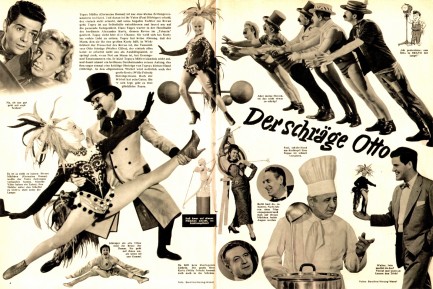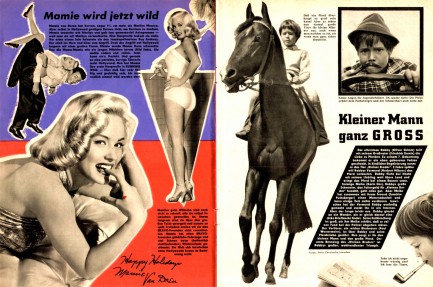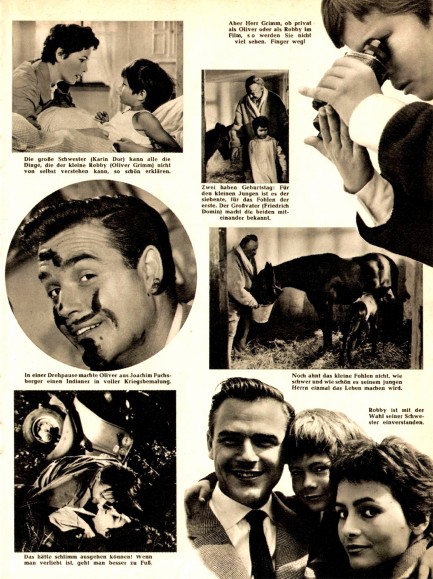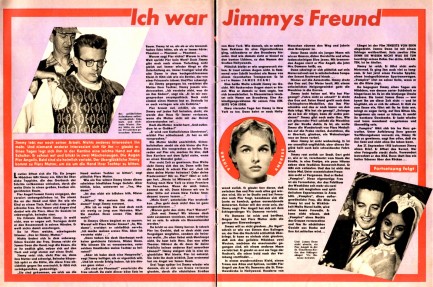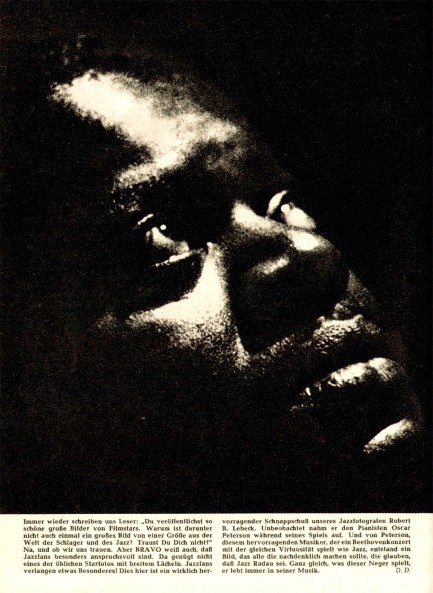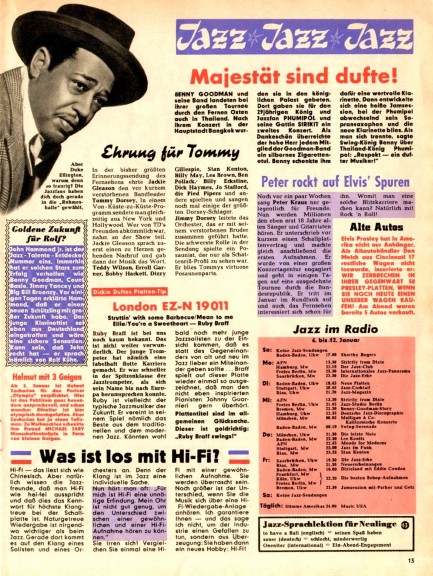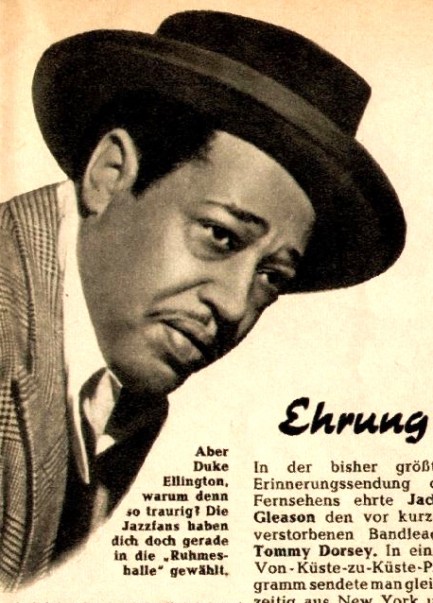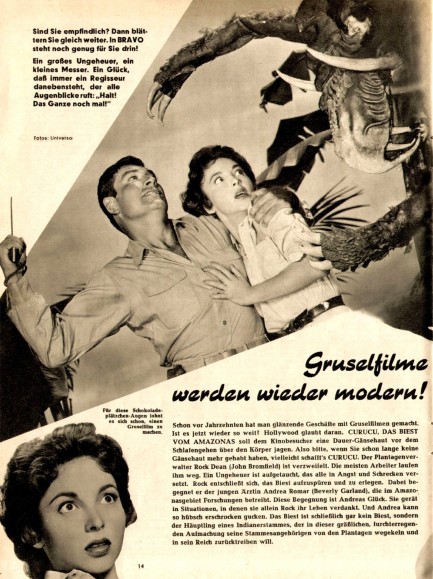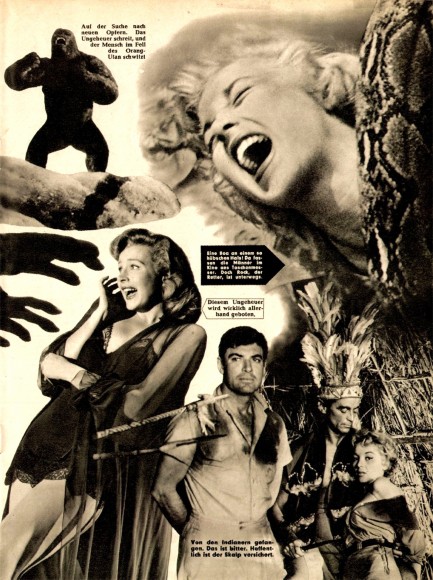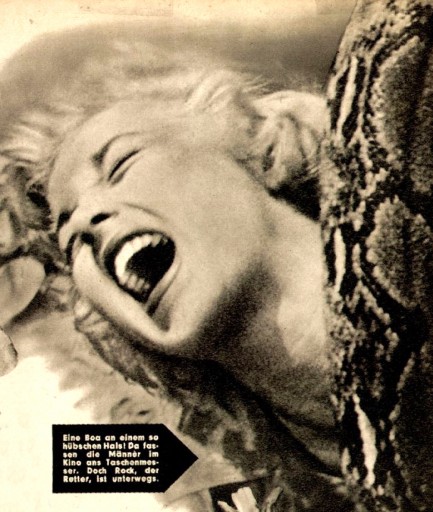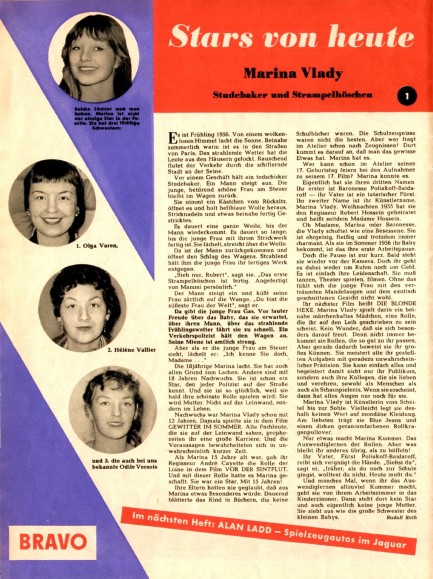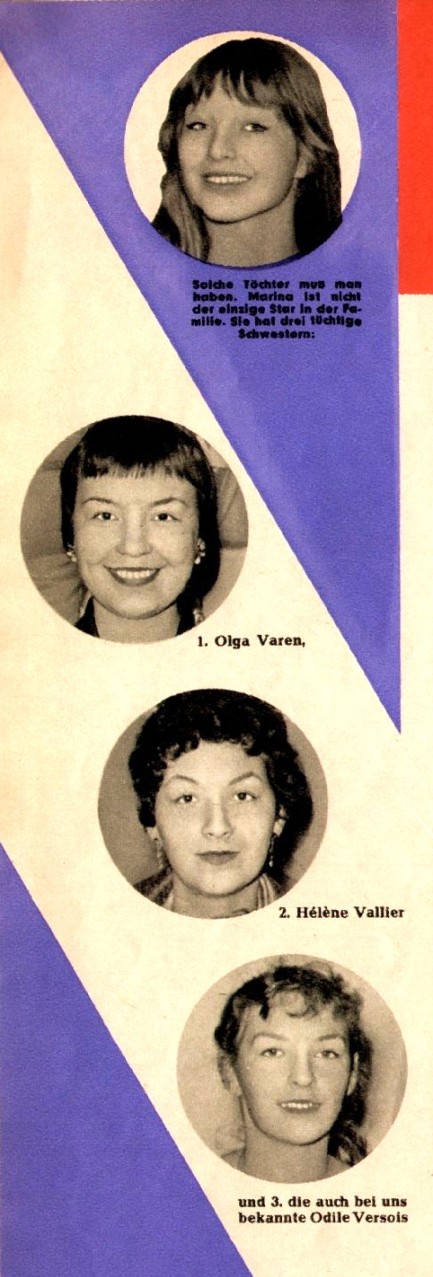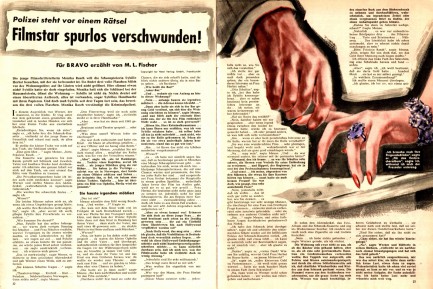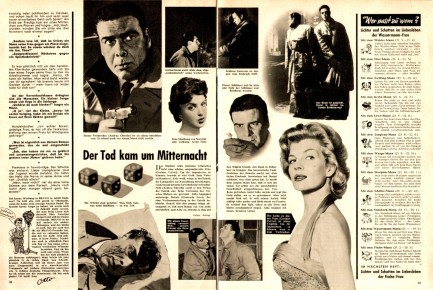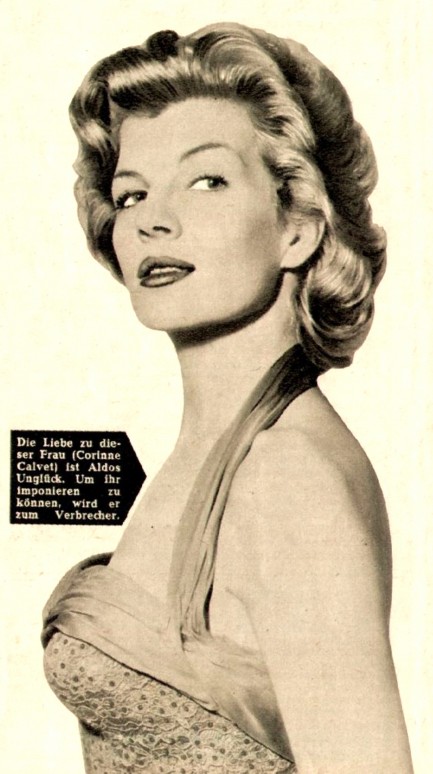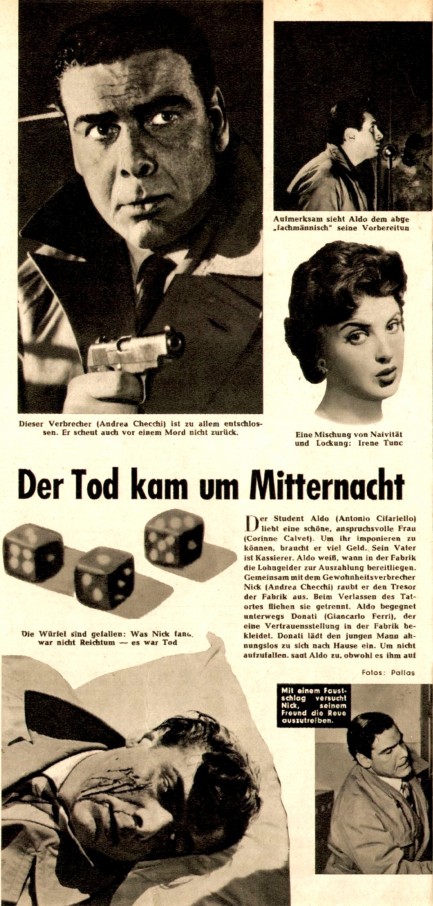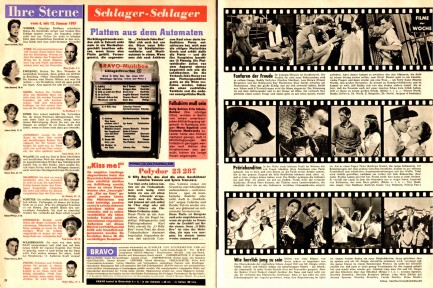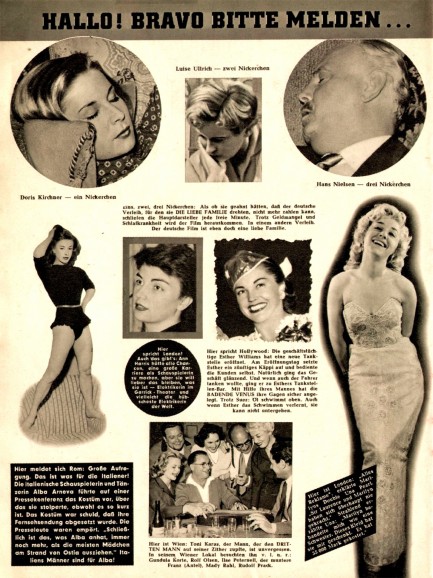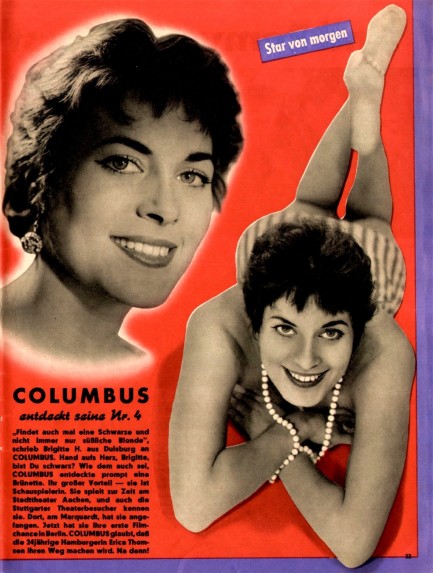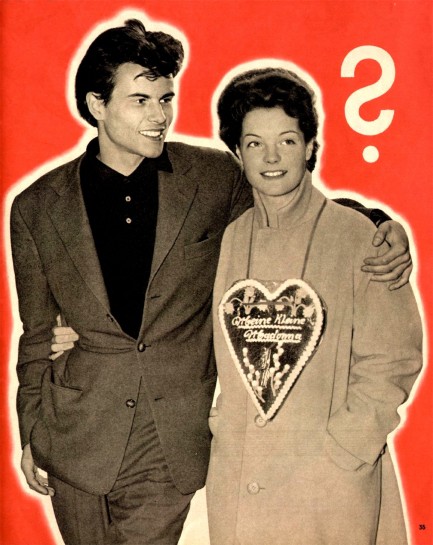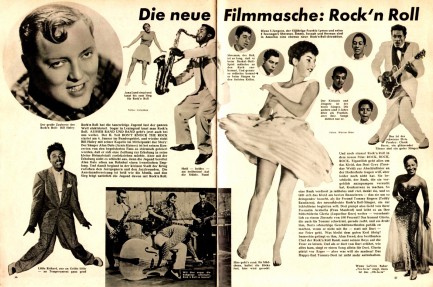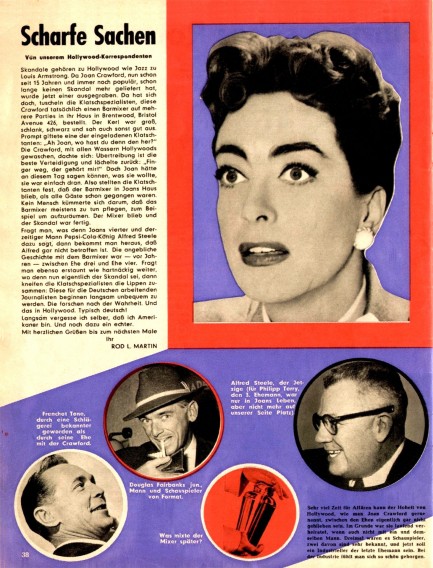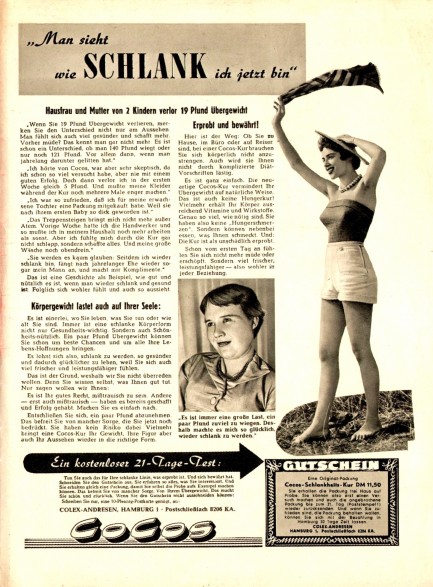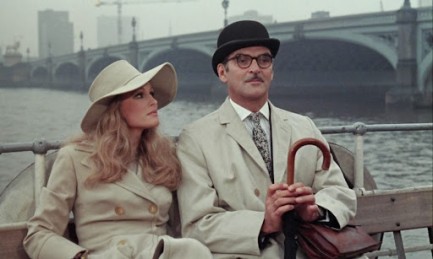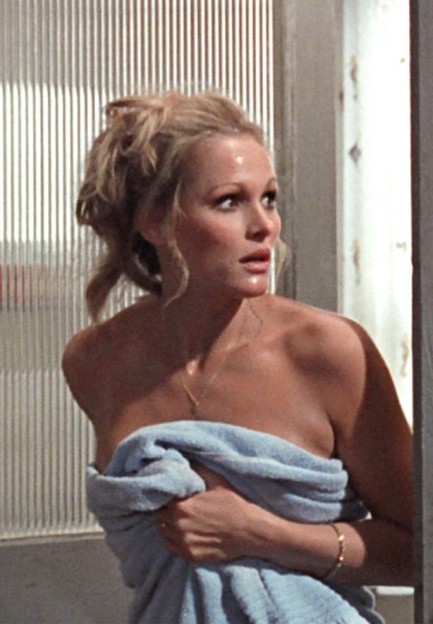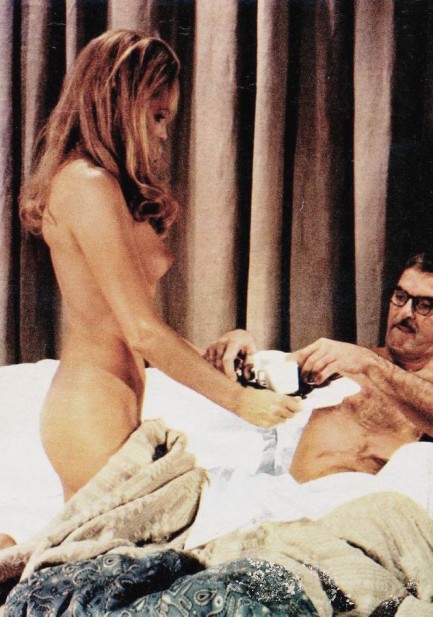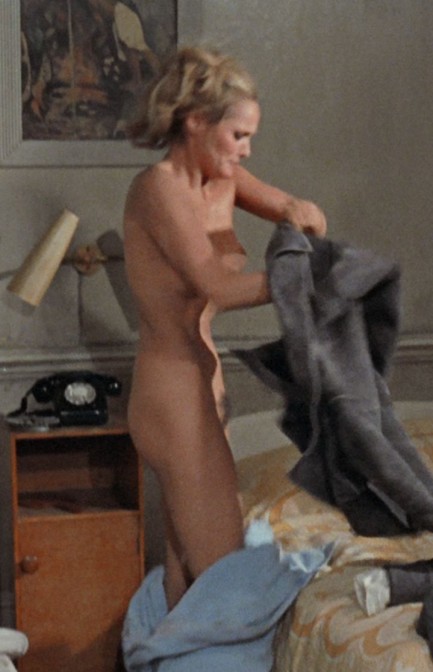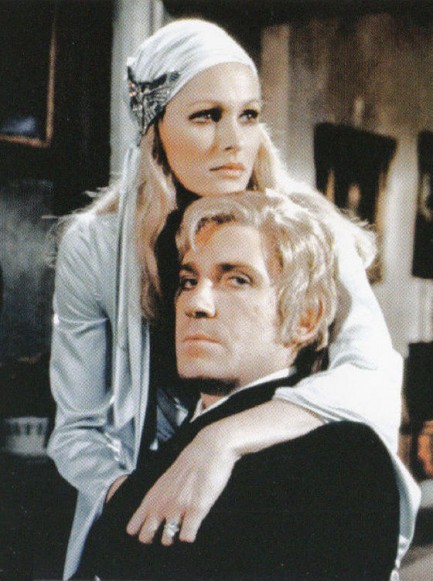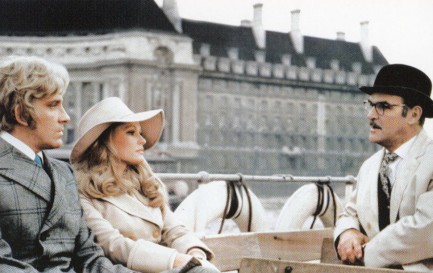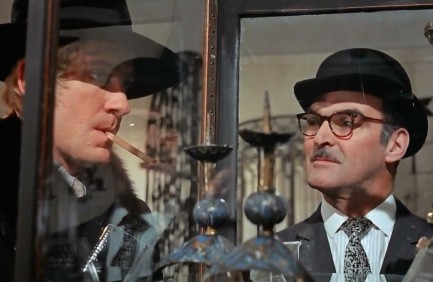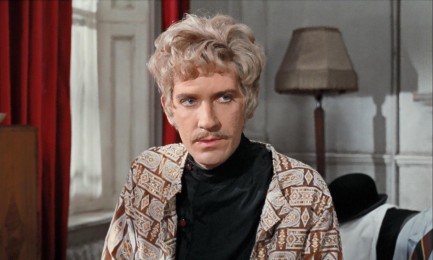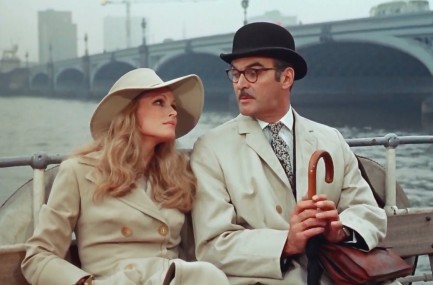 She could be Ursula Andress. 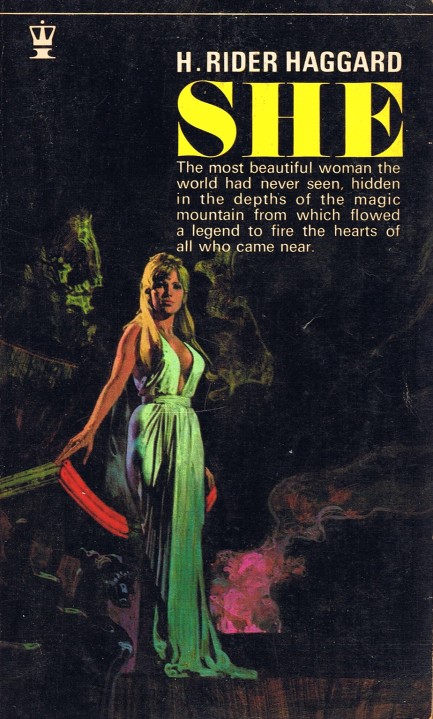
Above: one of many covers for H. Rider Haggard's all-time classic She, aka She: A History of Adventure, about the cruel, beautiful, and powerful ruler of a lost world. We chose this one because the art is based on the 1965 movie adaptation starring Ursula Andress, as you can discern at a glance. And if not, we added an Andress shot below from the film for comparison's sake. You wouldn't quite call this paperback edition from London based Hodder & Stoughton a tie-in—the movie came out in 1965 in Britain, whereas the paperback is from 1968. But Andress never goes out of style. You could probably put her on a book cover now and it would sell like potato chips. We're going to screen her version of She in a bit, and report back. We already checked out one of the other dozen versions, 1935's effort starring Helen Gahagan, which you can read about here if you're curious. 
 And the ineptitude that authors do. 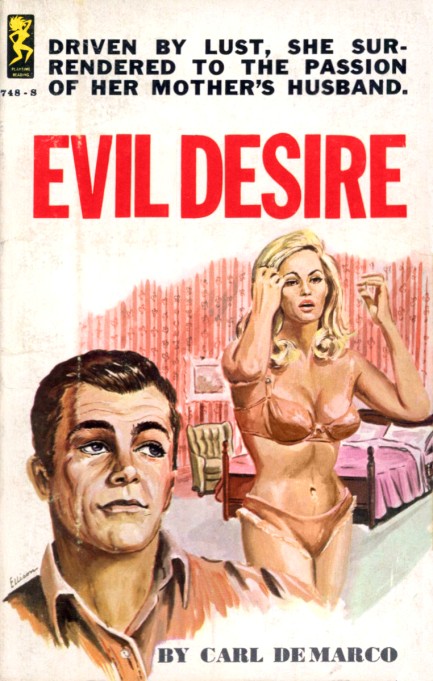 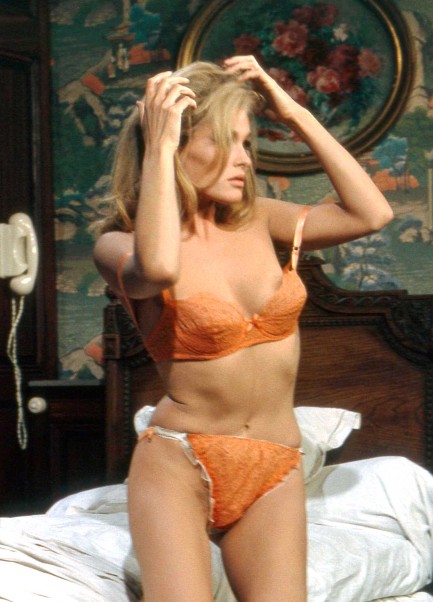
Why did we read Evil Desire? Because the cover femme fatale is obviously copied from Ursula Andress (in her 1965 role in What's New Pussycat?) and sometimes that's all it takes to attract our interest. The artist is credited only as Ellison, and though we wouldn't say he/she is greatly skilled, they at least chose a good model. The book was written by Carl DeMarco, author or pseudonym behind other sleaze efforts such as The Body Beautiful, Suzanne, and Woman on a String, and is exactly as its cover describes, as a stepfather gets sexually involved with his wife's eighteen year-old daughter. It all begins when he attempts to punish the daughter with a spanking, and finds not only that he likes it—so does she. In the end the two end up living together in Brazil and the spurned wife finds love at home, leaving everyone horny and happy by the final sentence. It wasn't competent in terms of writing skill, but in its favor it was—despite its title—light in tone, making for an easy and fast read. Is that a recommendation? Not even remotely.
 Intelligent, thoughtful, scalding hot—what's the catch? 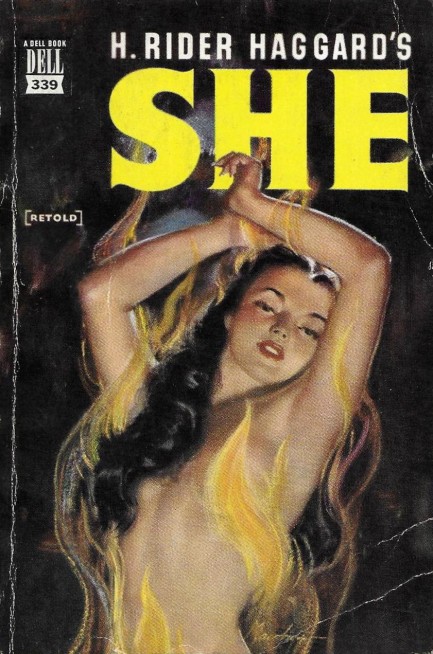
H. Rider Haggard's novel She is one of those rare fantasy/sci-fi novels that has been widely read through three different centuries. A pre-pulp novel, it was originally published in 1887, retained popular interest through the pulp era when it was made into a 1935 movie starring Helen Gahagan, continued generating interest through the mid-century paperback era and into the 1960s, when it was adapted with Ursula Andress in the lead role, and remains available in bookstores and from digital booksellers in the 2020s. The book has enjoyed such longevity because it's a well-written and archetypal lost world adventure with all the elements that sub-genre requires: intrepid explorers in an exotic land, savage encounters with locals, a central quest for something thought to be priceless or unobtainable, and a temptress at the center of the narrative.
The temptress, Ayesha, is an ancient but youthful countenanced woman of Arab descent who has discovered the secret to long life, but who's lost her true love along the way and awaits his reincarnation. She lives in a lost realm called Kôr amidst a host of Africans, who she hates, but rules while she pines for her dead lover to return. Two thousand years after his death, his direct descendant undertakes an expedition to the African interior, where he and Ayesha are destined to meet. This descendent, Leo Vincey, accompanied by his mentor and friend Horace Holly, has been handed down a story through the generations of an immortal woman who murdered his forebear. His quest is to find if such a fantastic story can be true, and possibly take revenge for his entire bloodline.
Haggard is good with descriptive passages, but what's equally interesting is that the book is partly procedural in nature, with long transcriptions of Latin, Arabic, and Greek, and an abundance of academic discussion. Eventually the tale centers around Ayesha's belief that Leo Vincey is her dead lover returned to her, which means her African vigil is mercifully at an end. Her plan? To go to England and rule it with Leo. She'll have to depose Queen Victoria to make that happen, but since she possesses advanced if not magical powers, she considers that no biggie. While we'd have loved to see the story head in that direction, obviously nothing written during the Victorian Age is going to involve a plot to destroy its eponymous figurehead. But what fun that would have been.
On a less fun note, and at risk of stating the obvious, books of this sort are culturally blinkered. The writers depict dark-skinned peoples as savage and deadly, though white-skinned peoples had by then ravaged the entire world, killing hundreds of millions upon hundreds of millions of people for no other reason than greed. This dismissal of non-white lives is exemplified when Horace Holly explains to Ayesha, who hates monarchs, that the nature of royalty has changed during the centuries of her self-imposed exile, and that Queen Victoria is, “venerated and beloved by all right-thinking people in her vast realms.” You have to smile at this, considering the British Empire was an industrial killing machine. Possibly Haggard wasn't aware of that back in 1887, but do any right-thinking people doubt he'd have ignored it even if he'd known?
It's a given that books such as She overlook or deliberately obscure these truths, therefore, if you crack one open, presumably you've made the decision to go along for the ride. While the book's cultural conceits will annoy some readers, it's worth noting that Ayesha's two thousand years of longevity provide Haggard the opportunity to espouse at least a few views unusual for the era, for example when she drops this nugget: “I have long seen that democracies, having no clear will of their own, in the end set up a tyrant and worship him.” Ayesha is Haggard's narrative savior, in our view. She's by far the most engaging character. Though he portrays her as ignorant due to her long sequestration, some of what she says is pretty damn insightful and ironic in 2023. It helps make She a little easier to swallow.
However, the flipside of Ayesha's sometimes intriguing opinions is that she's long-winded. You'd think two-thousand years of life would make her economical with words, but no—the woman can really beat a dead horse. Actually, so can Horace Holly, who narrates via a letter sent to a friend. These aren't dealbreaking flaws, merely ones to be forewarned about. They make the book many pages longer than it need be. And perhaps another small issue is that there aren't many surprises in the story—Holly's narration, being basically epistolary in nature, constantly hints at tragedy, and every plot turn makes a racket galloping at you from a great distance. But She is still good stuff from Haggard, and is a literary landmark for discernible reasons. This edition came from Dell Publications in 1949 with Lou Marchetti cover art.
 Minuit puts the country's hospitable reputation to the test. 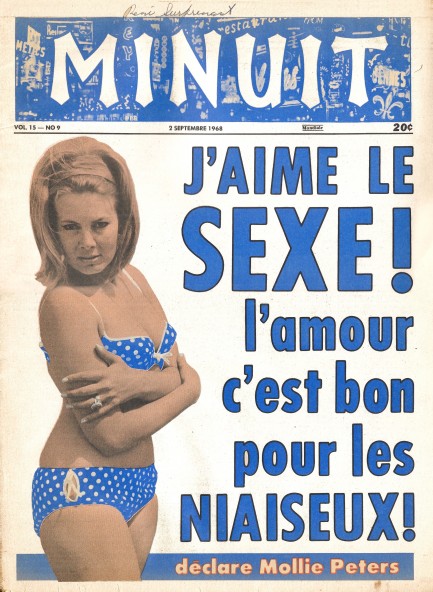
Ever since we discovered a while back that the U.S. tabloid Midnight was actually a spin-off of Montreal based Minuit we've been looking around for issues. We finally had some luck. This example hit Canadian newsstands today in 1968, and on the cover is British actress Mollie Peters, or Molly Peters. Inside, various Hollywood stars are spotlighted in unflattering ways. Edy Williams was allegedly attacked by a lesbian; Paul Newman resorted to transcendental meditation to cut down on his drinking; Jason Robards, Jr. broke everything Humphrey Bogart related in Lauren Bacall's house; Robert Vaughn paid off his extensive gambling debts and cancelled his credit cards; Janet Margolin allegedly ate a pound of ground beef every day for health reasons; and Ursula Andress attacked Anita Ekberg in a Paris restaurant for making eyes at Andress's boyfriend Jean-Paul Belmondo.
There's also a note on Babsi Zimmermann, who Minuit claims just refused a nude role in a French film. We noticed the blurb because of her name, which seems too good to be true, and familiar too. We looked her up and she did exist. It turns out she was better known as Barbara Zimmermann. She changed her stage name after the release of her first film, a counter-culture sexploitation romp called Heißer Sand auf Sylt, aka The New Life Style (Just to Be Love). Maybe she wanted a fresh start because the movie was such a stinker. We know it was bad because we wrote about it, which is why her name sounded familiar. She's naked as a donskoy cat in it, so Minuit's claim that she refused the French movie makes sense if she wanted to rebrand herself. The change still has people confused. Currently IMDB has separate entries for Babsi and Barbara.
Minuit reserves special attention for U.S. actor George Hamilton, who had been generally targeted by tabloids for avoiding military service in Vietnam. Why him? We wrote about the reason a long while back, and if you're curious you can check. Minuit wryly informs readers that, “George Hamilton somehow managed to break his toe the day after he received a notice to report to the U.S. Army recruiting center. This gives him an interesting three-month [deferral]. It's clever, isn't it?” Obviously, toes heal. Hamilton eventually received a full deferral for other reasons.
Also in this issue, Minuit editors treat readers to a story about a man cut in half by a train. We feel like it's urban folklore, but there are photos—for any who might be convinced by those—and a long story explaining how a man named Regerio Estrada caught his wife Lucia in bed with another man, beat him unconscious, and tied him to a train track to await the next express. Do we buy it? Not really. The internet contains only a fraction of all knowledge and history, but we think this tawdry tale is so bizarre that it would have found its way online. There's nothing. Or maybe we're just the first to upload it. Anything is possible. We have additional colorful Canadian tabloids we'll be sharing in the months ahead. You'll find eighteen scans below. 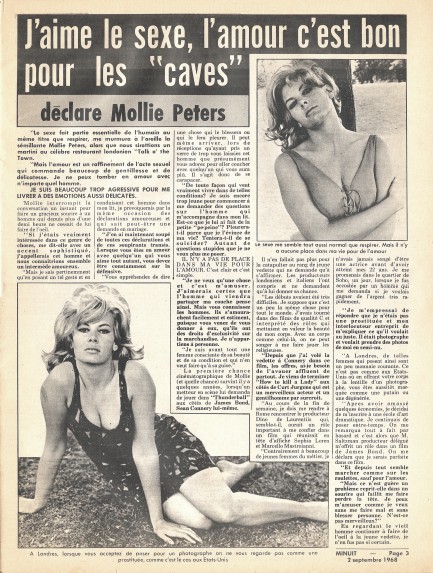 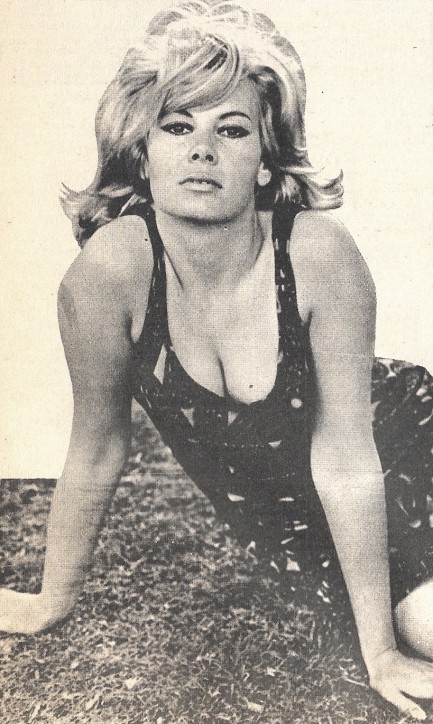 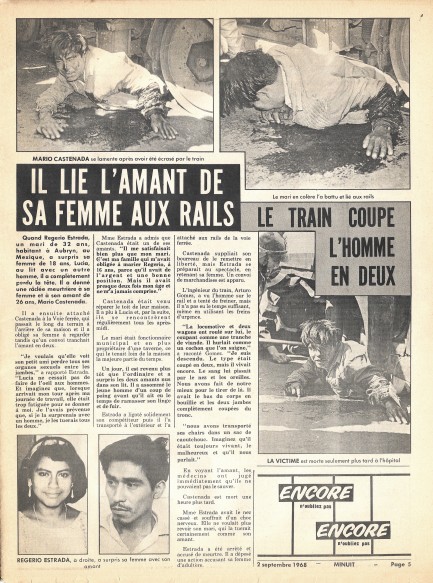 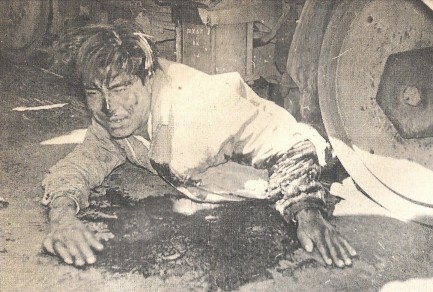 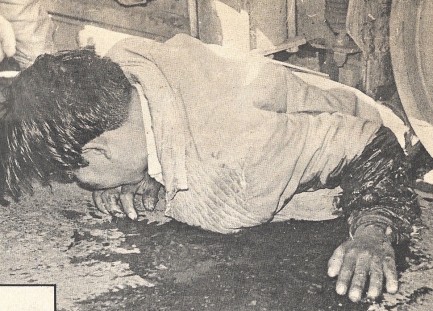 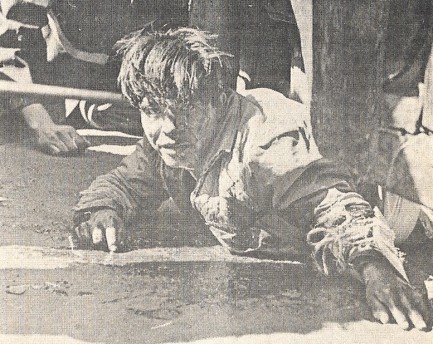 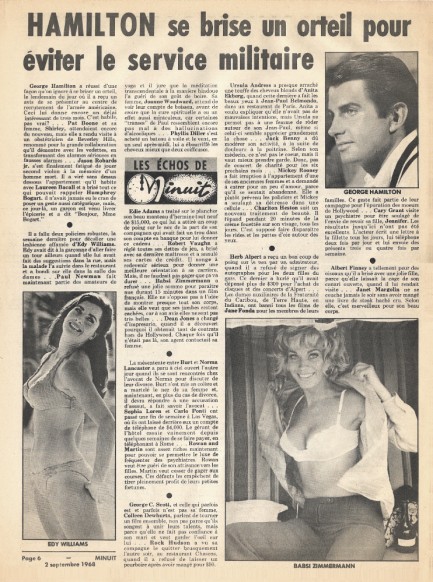   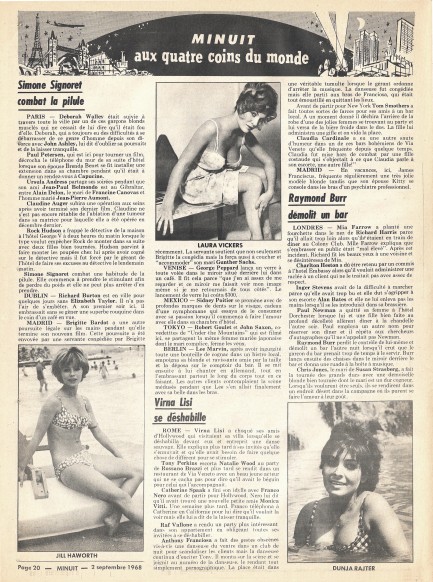   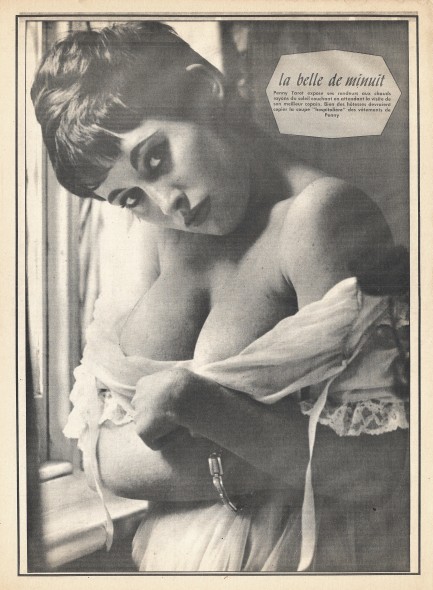 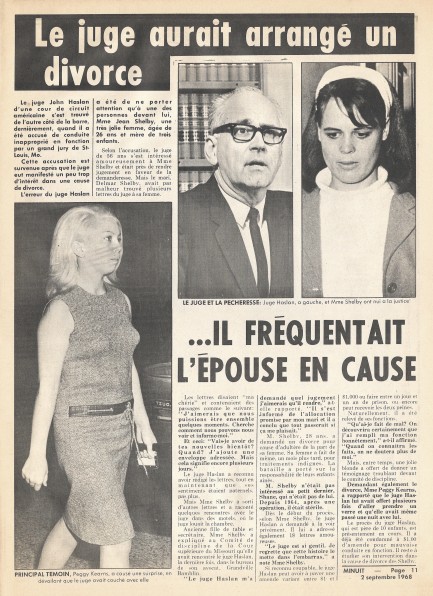 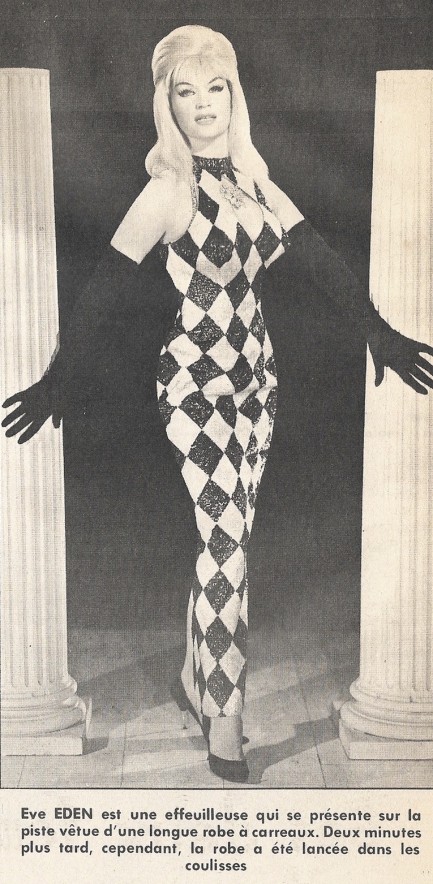 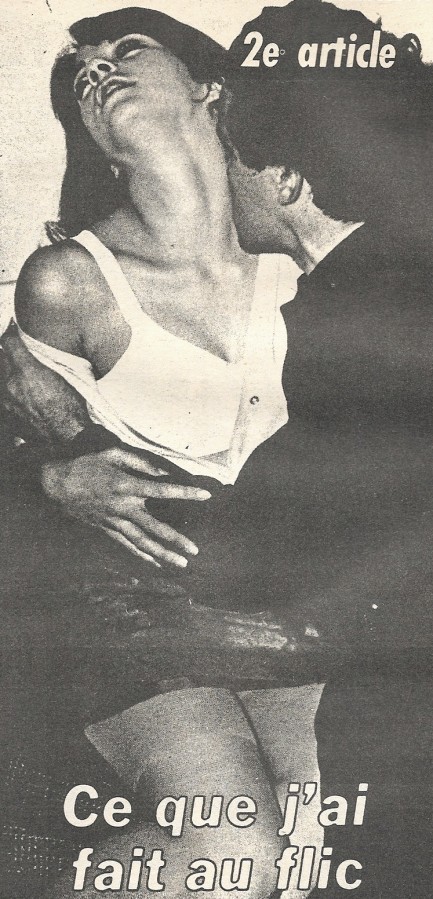 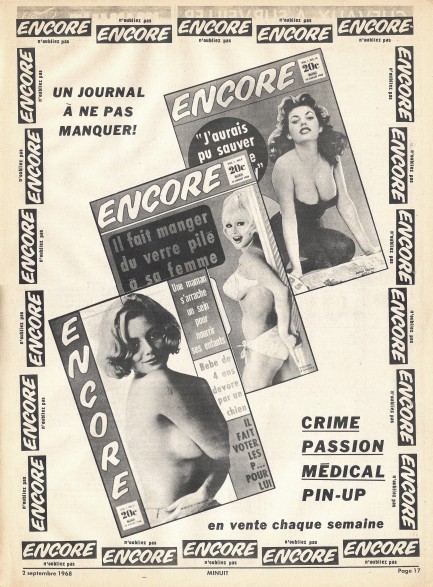
 When is a terrible movie a must-watch? When it stars Ursula Andress. 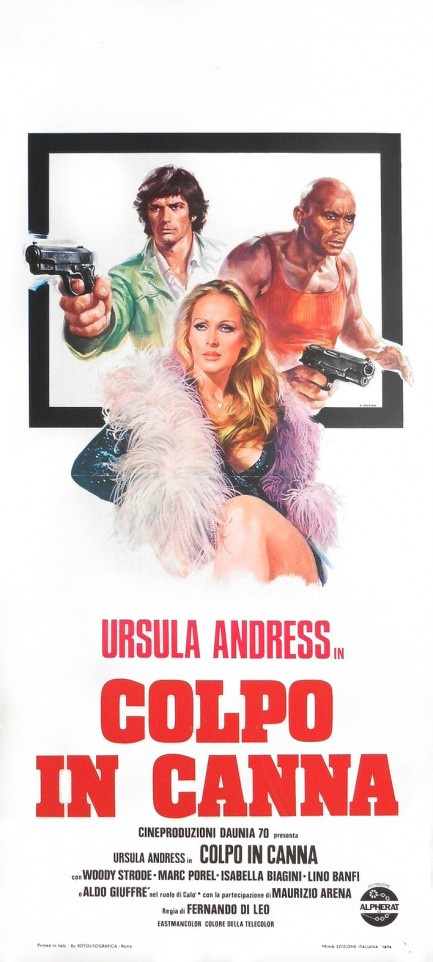
Colpo in canna, for which you see a promo poster above, starred Swiss goddess Ursula Andress during the height of her nudie period, as you'll soon see. She plays a flight attendant paid by a stranger to deliver a note. Sounds legit, right? She has no idea she's delivering this message to criminals. These crooks don't react well. They rough her up and force her to act as bait to find the writer of the note, but she hooks up with a hot circus acrobat who lends a hand—and his bed—as Andress is chased all over Naples by two gangs and the cops.
Crowdsourced sites like IMDB call Colpo in canna an action adventure, which is why we watched it. But it's actually an action comedy, and anything ostensibly comedic from Italy during the 1970s should strike fear into your heart. That fear will be realized, as ludicrous oompah brass music and ragtime numbers accompany pratfall interludes and fights played for laughs. It's torturous.
The only reason to endure this patchwork of stolen Benny Hill routines is for Andress, who most people would be happy to stare at for hours fully clothed, but who here, at thirty-nine years old and looking as breathtaking as ever, has five—or was it six?—nude scenes. In the same way a milkshake is just a delivery system for a sugar high, this film is just a delivery system for an Andress high. She'll leave you dizzy, possibly even stunned. Colpo in canna, which was known in English as Loaded Guns, premiered in Italy today in 1975             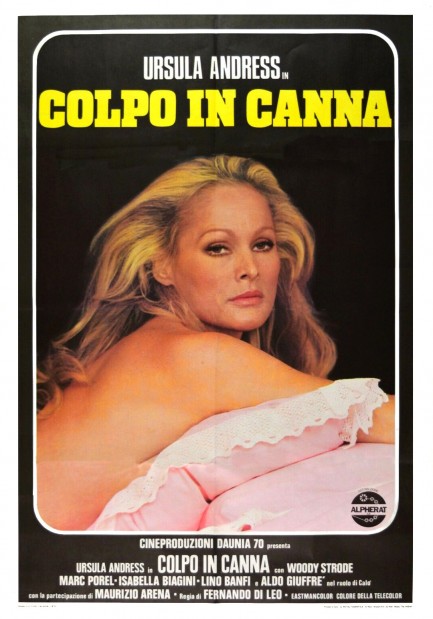
 West German magazine tears down the wall. 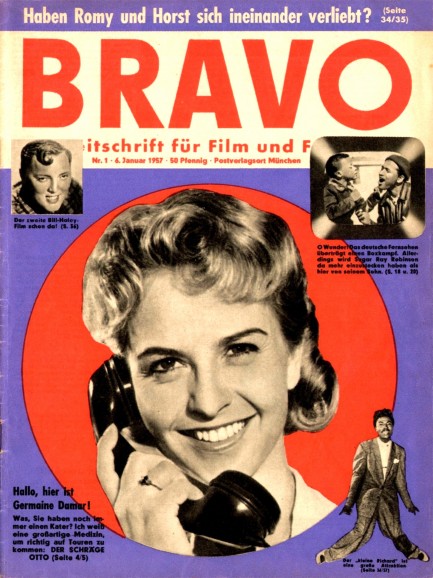
German isn't one of our languages, but who needs to read it when you have a magazine with a red and purple motif that's pure eye candy? Every page of this issue of the pop culture magazine Bravo says yum. It hit newsstands today in 1957 and is filled with interesting and rare starfotos of celebs like Romy Schneider, Horst Buchholz, Clark Gable, Karin Dor, Mamie Van Doren, Ursula Andress, Marina Vlady, Corinne Calvet, jazzists Oscar Peterson and Duke Ellington, and many others. This was an excellent find.
We perused other issues of Bravo and it seemed to us—more so in those examples than this one—that it was a gay interest publication. After a scan around some German sites for confirmation we found that it was as we thought. The magazine's gay themes were subtle, but they were there, and at one blog the writer said that surviving as a gay youth in West Berlin during the 1960s, for him, would have been impossible without Bravo. We will have more from this barrier smashing publication later. Thirty-five panels below.
 You can always bank on Andress. 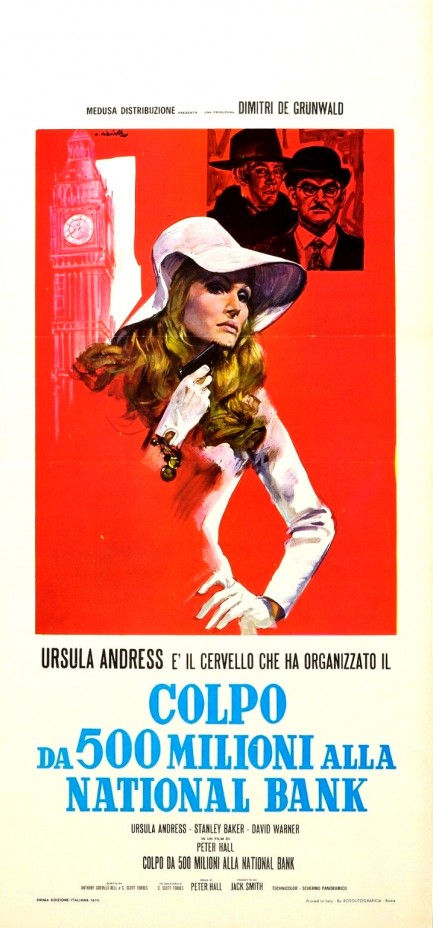
Colpo da 500 milioni alla National Bank was originally made in England as Perfect Friday, and as you can see from the poster, it starred the Swiss vision known as Ursula Andress. That makes it a must watch, and what you get is the type of erotic caper Andress made more than once, as this time she becomes the center of a plot to rob a London bank of £200,000. Her partners are her husband and the deputy bank manager, and she's playing both ends against the middle, so to speak—i.e. doing the nasty with both while telling neither. The heist develops as heists always do, but the real question becomes who she'll choose to run away with in the end.
Andress must have loved making these films. If they weren't the easiest money in cinema history they sure look like it. Every time she got one of these scripts we imagine her going, “Ker-ching.” All she had to do was work in various European capitals, be charming and sophisticated, speak in that impossibly sexy Germanic rasp of hers—and of course strip. In that respect Andress was as reliable as government bonds. Getting naked isn't easy for some, let alone doing it in front of twenty people, but she had a pretty insouciant attitude about it, once saying, “I have no problem with nudity. I can look at myself. I like walking around nude. It doesn't bother me.”
Of course, the anti-nudity set in today's new age of prudishness would claim she said that because it was expected/demanded of her. Well, we have only her words to go by. When a person's own statements are ignored, that makes it mighty easy to turn them into whatever one wishes. There's a lot of that going around today. But we'll show her some respect and assume she said what she she meant. Her face and body got her in the door and kept her at the party, and she was aware of that. While she was a solid actress, she wasn't about to win any awards. At least not with these scripts. Colpo da 500 milioni alla National Bank is a silly little movie but it shows Andress at her best—in every way. For her fans it's mandatory. It had its world premiere in Italy today in 1970.
 All the best people showed up. 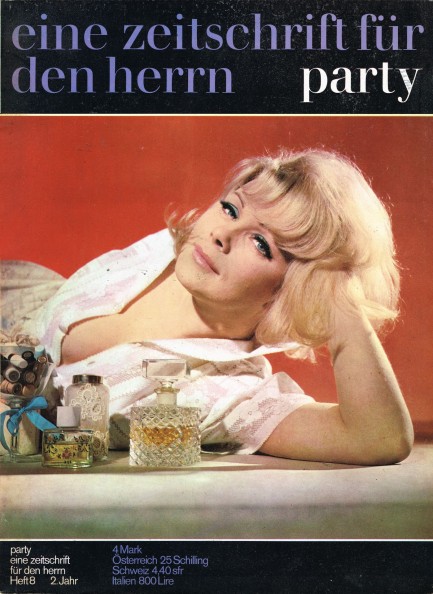
The West German pop culture and celeb magazine Party, which was produced in Hannover by Lehning Press, is an obscure publication. It's very vivid, with bright color, many full page photos, and many film celebrities represented. Equal time is given to unknowns too, for example, the cover features Annelies Niessner, who was... we have no idea, and inside a color page is given to Cornelie, identified only as a “millionärstochter geht eigene wege,” a millionaire's daughter who goes her own way.
In terms of celebs you get Carol Lynley, Jane Russell, Sandra Dee, Stella Stevens, Laya Raki, a beautiful portrait of Jane Fonda, numerous shots of Ursula Andress, and many others. This publication didn't waste words, even on the copyright date. The cover tells us this is issue eight, so we're going to say it came in August, and we're thinking it's from 1967. Though it may be short on info, Party is an appropriate name, because it's a very fun magazine. We have several more issues, so look for those later. 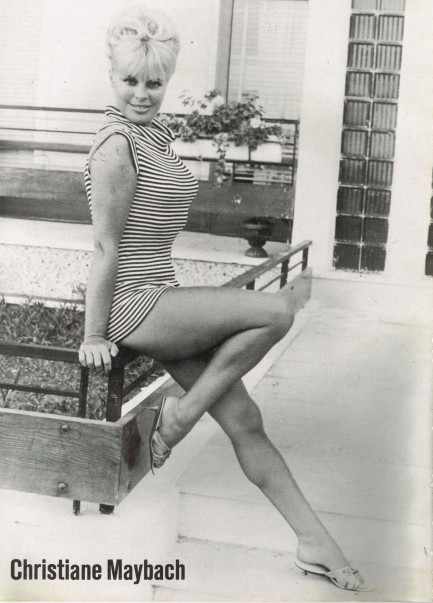  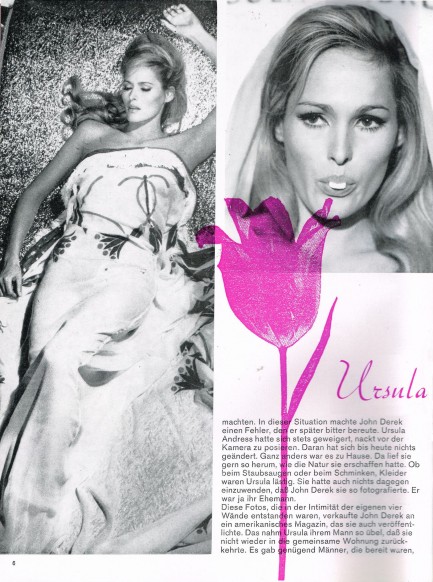 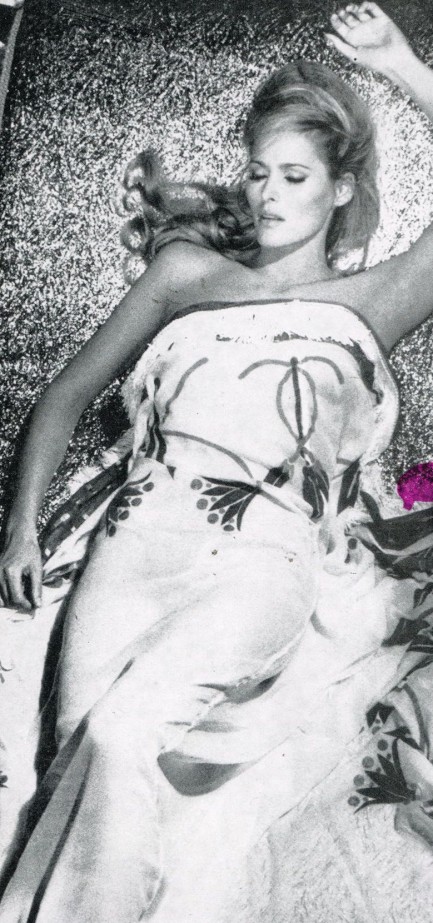 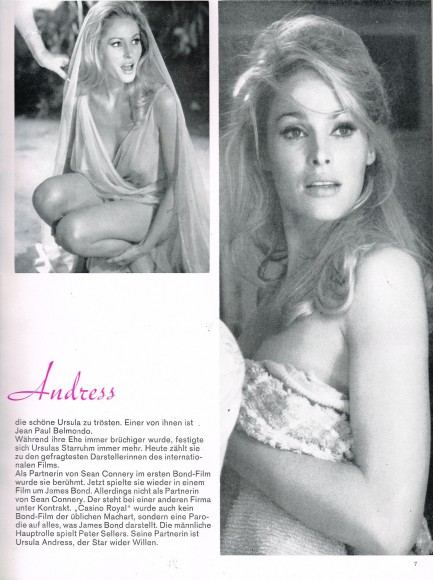 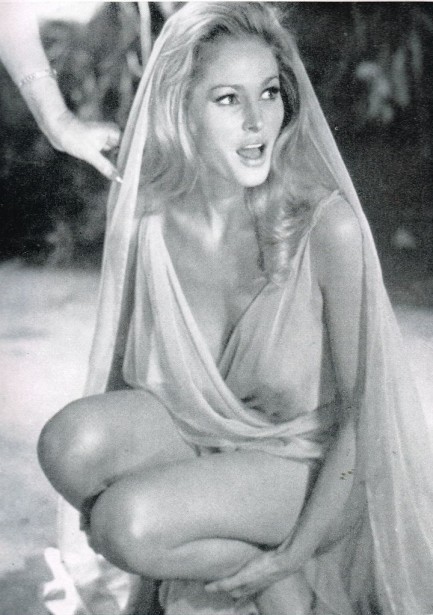  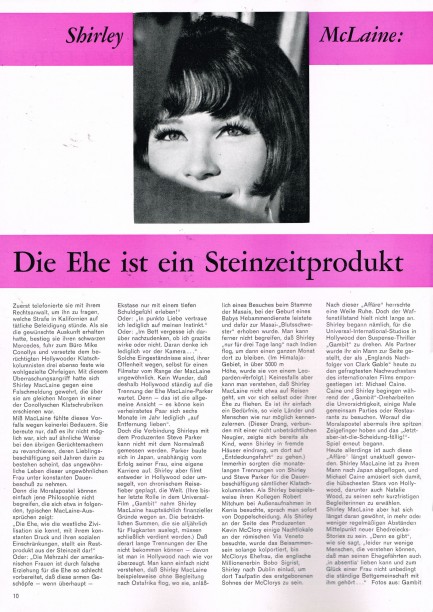 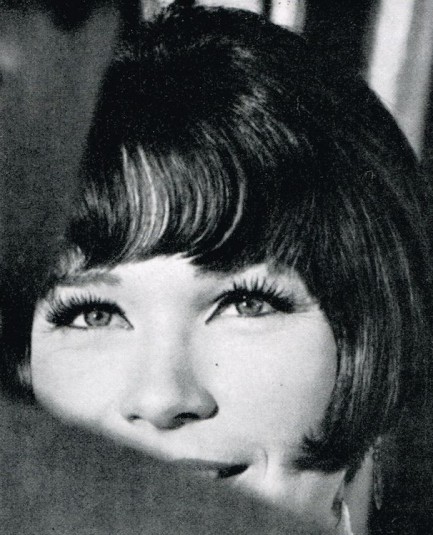 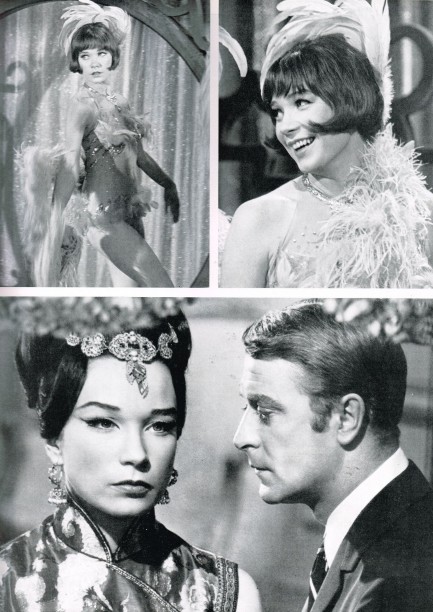 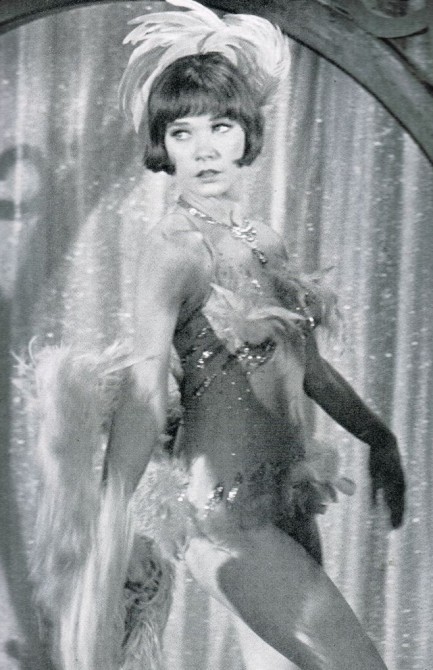 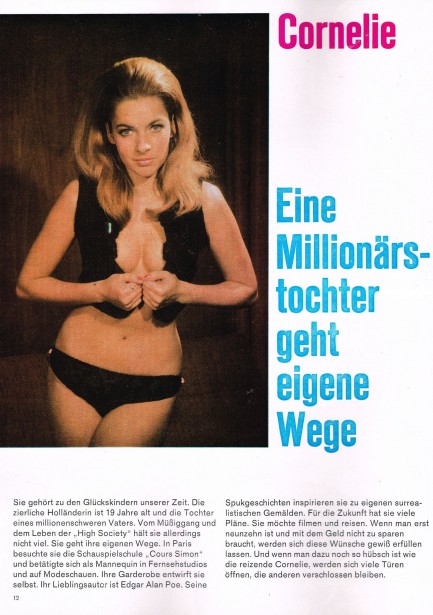  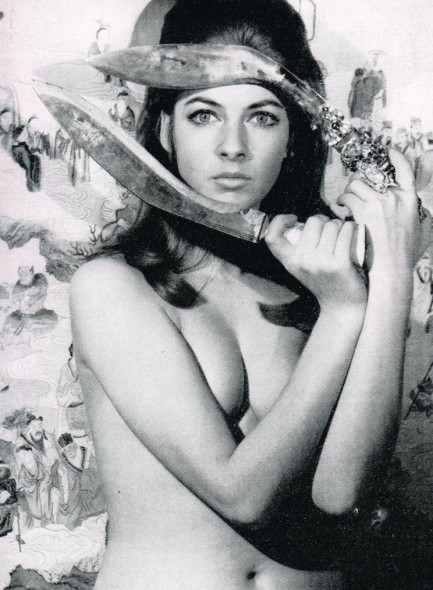 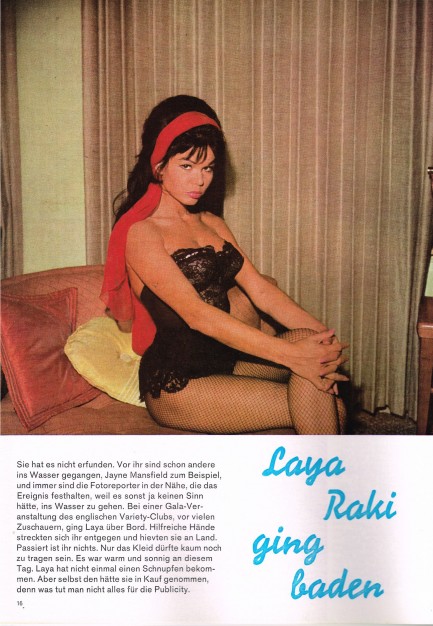   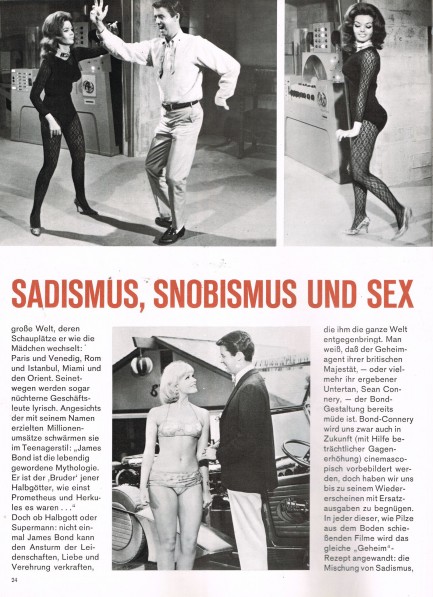 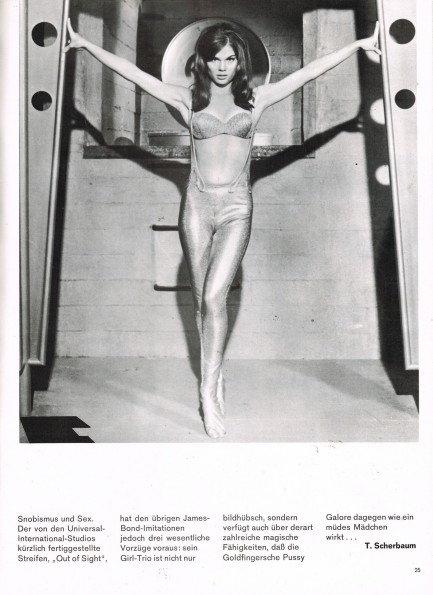 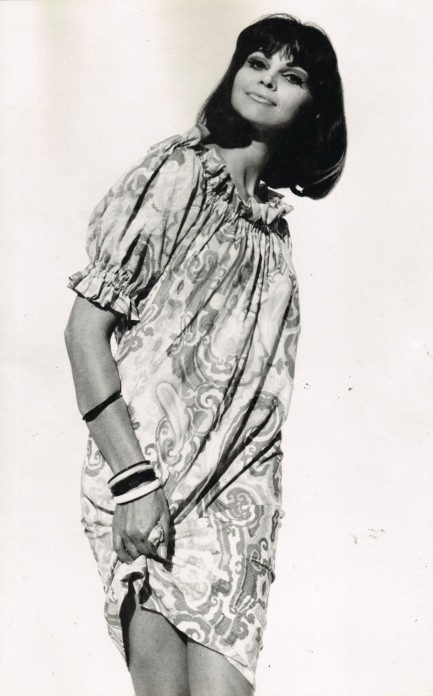 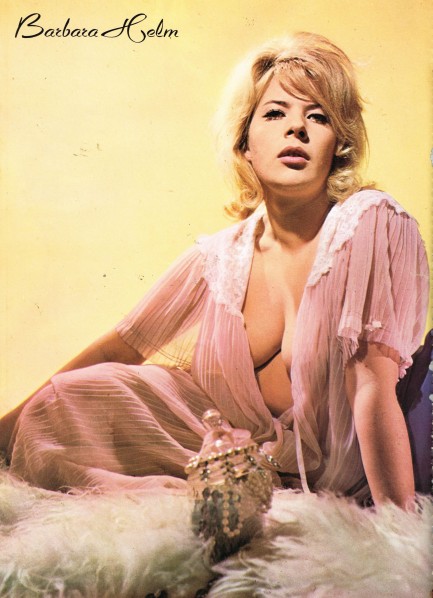 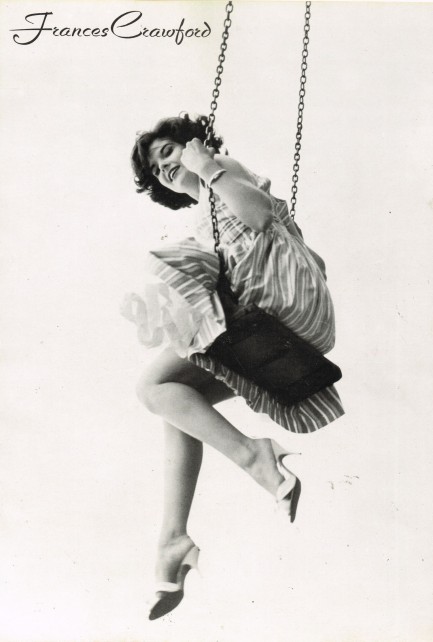   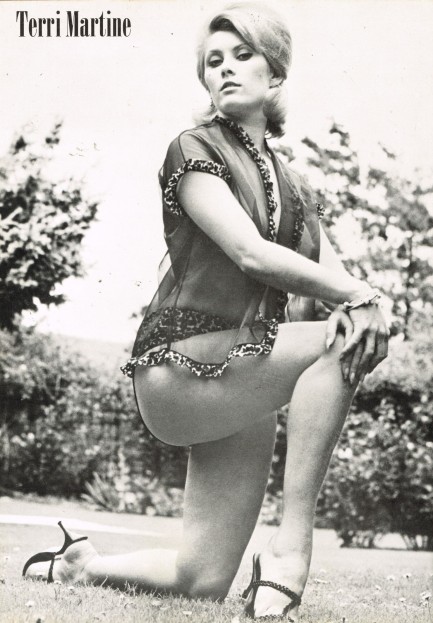  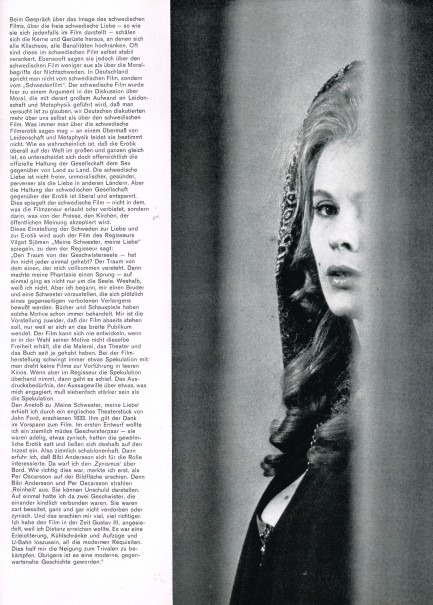 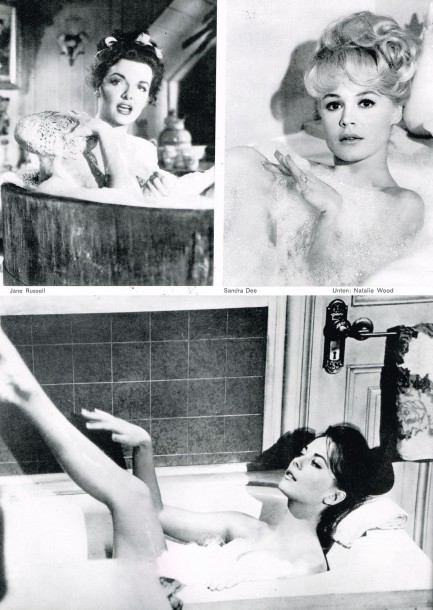  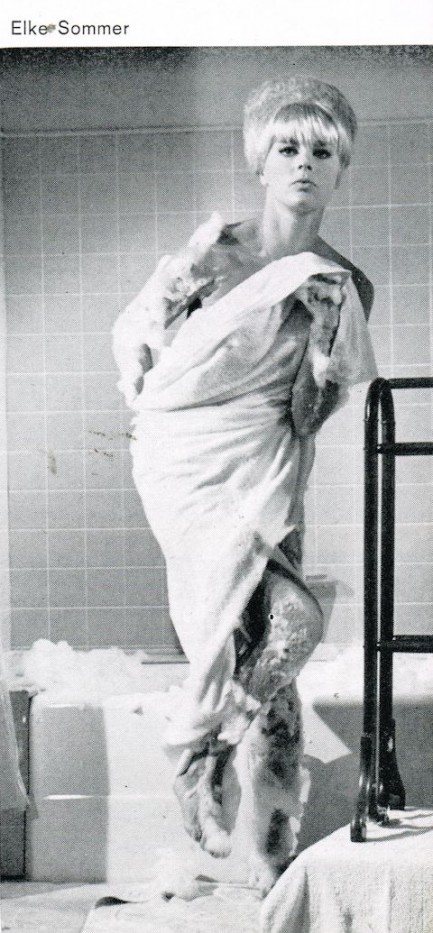 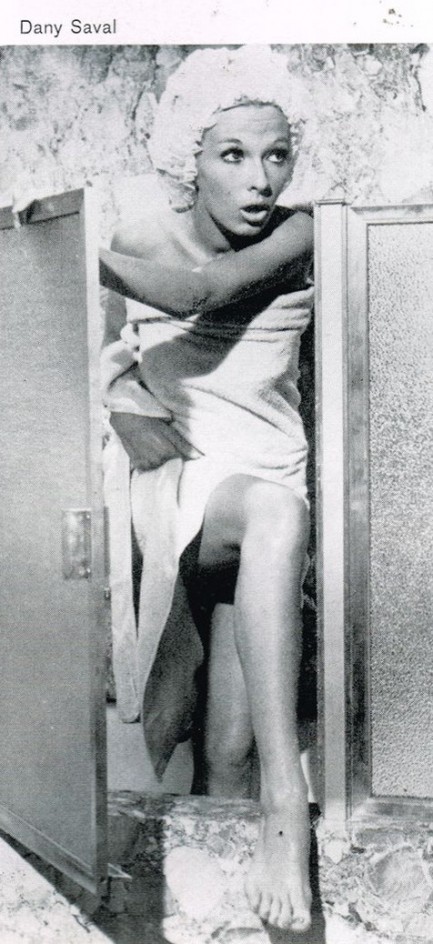 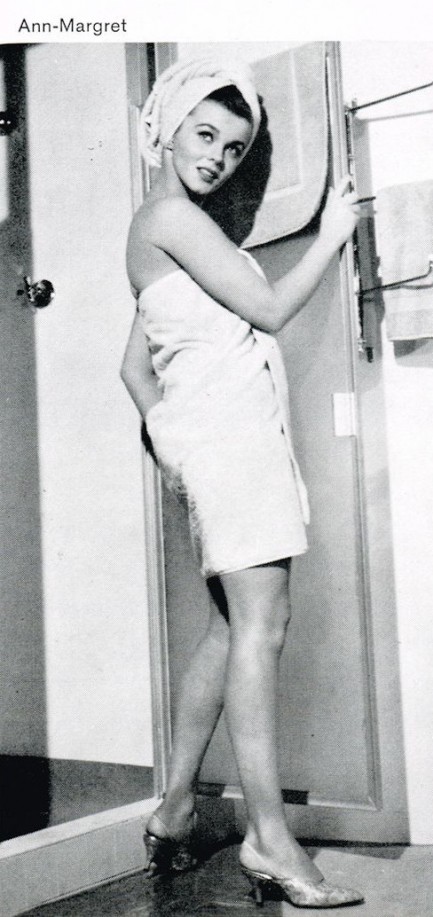 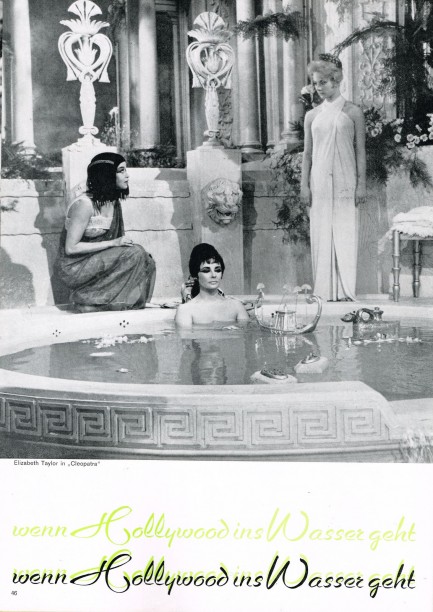 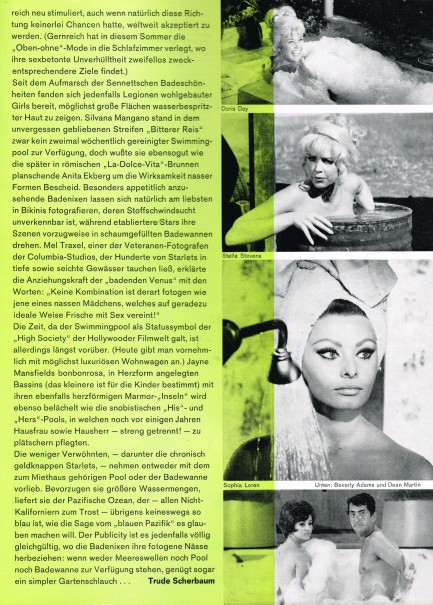 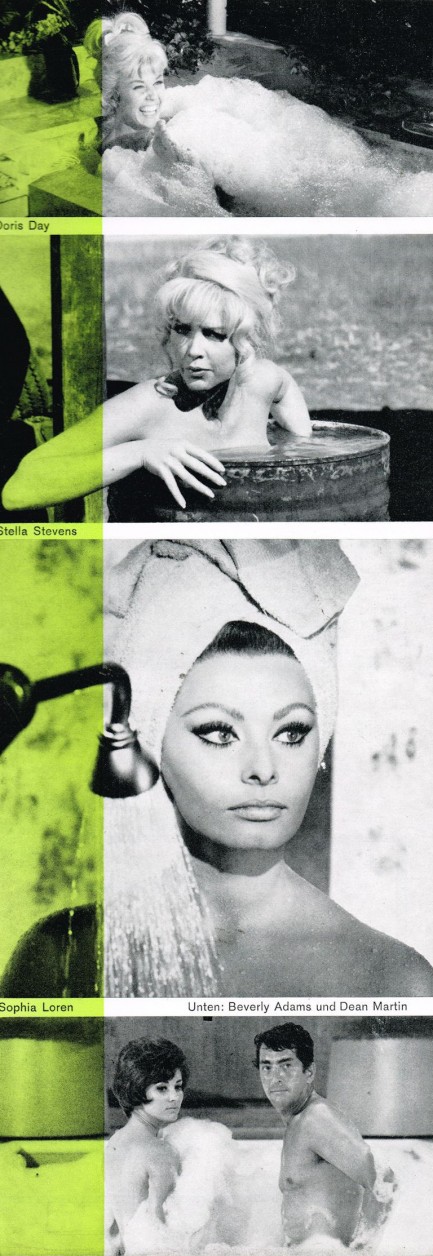 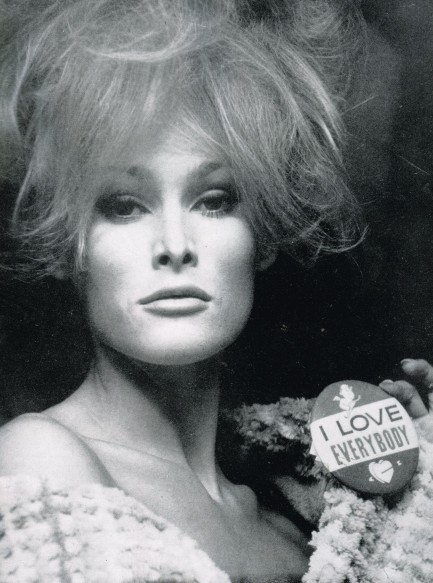 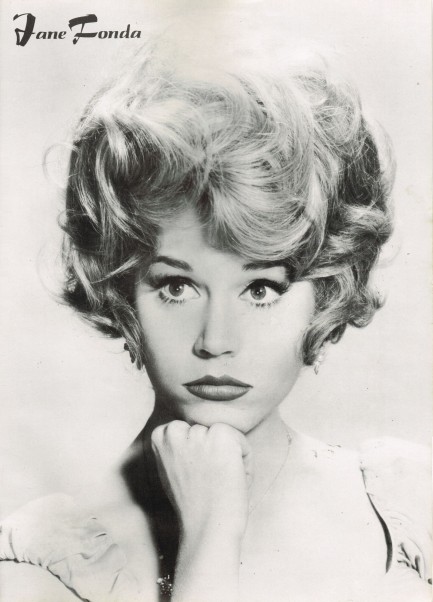 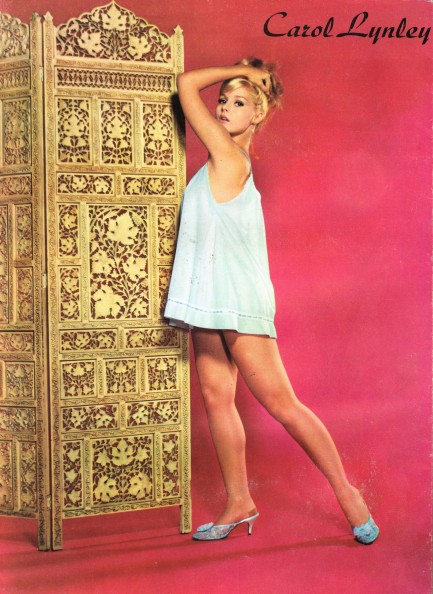
 They may be cannibals but you have to credit their exquisite culinary taste. 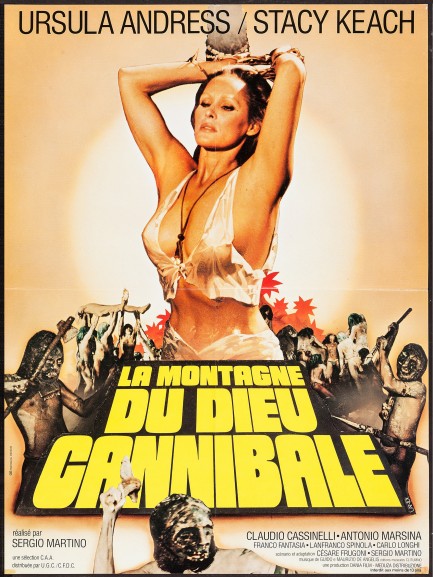
The above poster for was made to promote Sergio Martino's La montagne du dieu cannibale, which was originally filmed in Italy as La montagna del dio cannibale, and in English was known as Slave of the Cannibal God and The Mountain of the Cannibal God. Basically, Ursula Andress ventures into the New Guinean jungle to find her husband, who disappeared during an expedition to Ra Ra Me Mountain, considered by native tribes to be cursed. The movie was actually shot in Sri Lanka, but details, details. Andress is accompanied on her quest by her brother, played by Antonio Marsina, a professor, played by Stacy Keach, and some unlucky locals. Their jungle trek brings on interpersonal strife, native attacks, gruesome murders, eventual capture, and additional gruesome murders, all to the accompaniment of creepy drum and synth music.
You'll sometimes see this movie classified as horror, but it's really a mondo revulsion flick, padded with real animal deaths that most people will find unwatchable. These gross-outs are somewhat balanced by the imminently watchable Ursula Andress, who's forty-two here and looking just fine. We don't mention that in passing. The entire point of this gorefest is to get her tied to a stake, stripped, and caressed by hot native girls. The plot about her missing husband—which morphs into a scheme to get rich with uranium—is just a fig leaf. We don't recommend the movie even with Andress undressed in it, but if you watch it maybe don't eat lunch beforehand. After originally premiering in West Germany, La montagne du dieu cannibale opened in France today in 1978.  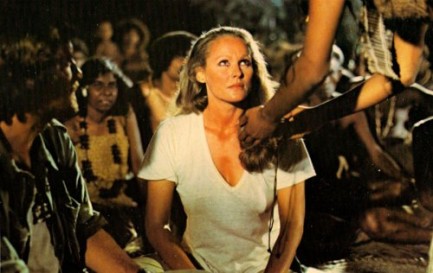   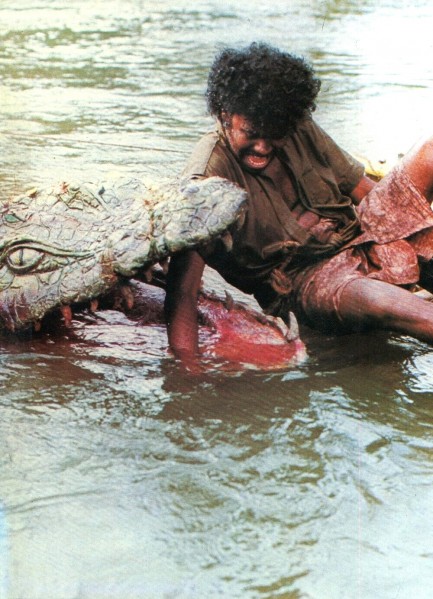 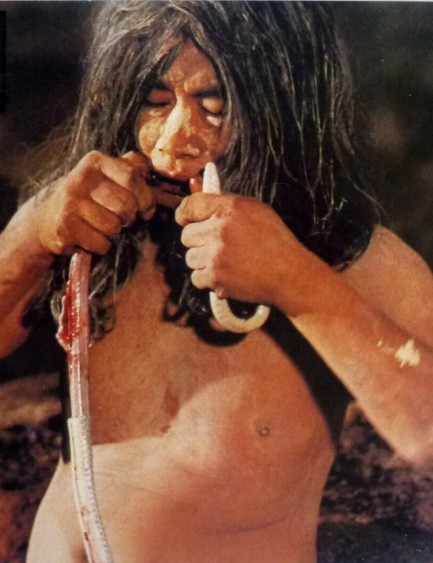 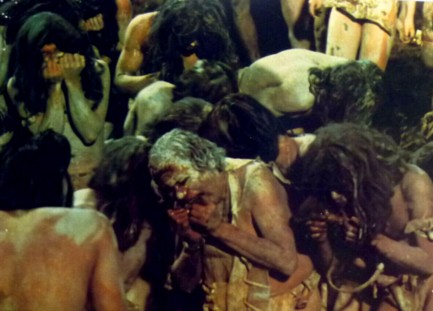     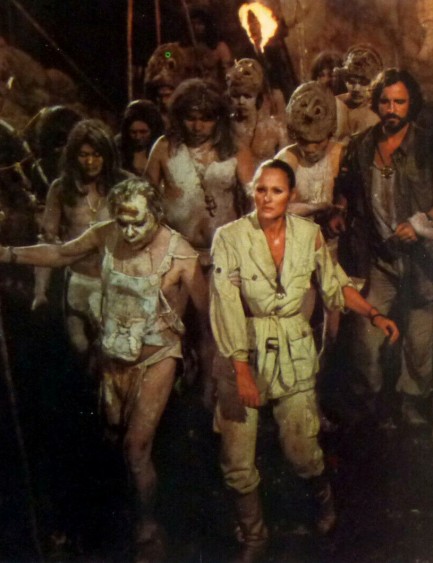   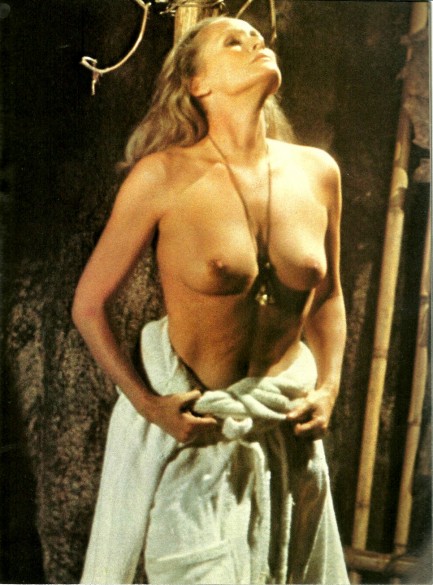 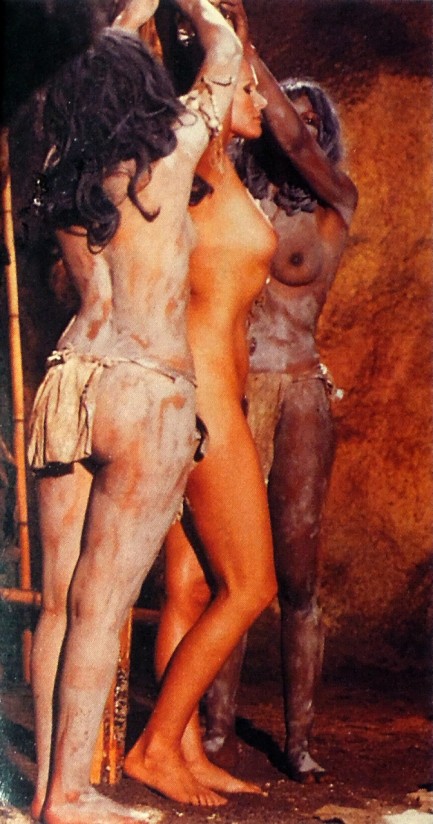  
 Look on the bright side. Yes, you'll be dead. But I may be proof God exists, so maybe you won't be dead forever. 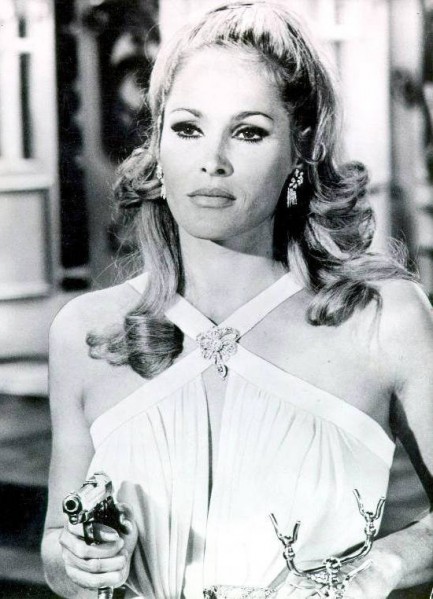
Above, one of about a thousand stunning photos of Swiss actress Ursula Andress, one of cinema's all-time beauties. As we noted way back the first time we posted her, she obviously was delivered from the sea on a large clamshell. There's no other explanation. A higher power had to be involved. This shot was made as a promo for her 1975 made-in-Italy comedic thriller Colpo en canna, aka Loaded Guns. We'll get back to that later.

|
 |

The headlines that mattered yesteryear.
2003—Hope Dies
Film legend Bob Hope dies of pneumonia two months after celebrating his 100th birthday. 1945—Churchill Given the Sack
In spite of admiring Winston Churchill as a great wartime leader, Britons elect
Clement Attlee the nation's new prime minister in a sweeping victory for the Labour Party over the Conservatives. 1952—Evita Peron Dies
Eva Duarte de Peron, aka Evita, wife of the president of the Argentine Republic, dies from cancer at age 33. Evita had brought the working classes into a position of political power never witnessed before, but was hated by the nation's powerful military class. She is lain to rest in Milan, Italy in a secret grave under a nun's name, but is eventually returned to Argentina for reburial beside her husband in 1974. 1943—Mussolini Calls It Quits
Italian dictator Benito Mussolini steps down as head of the armed forces and the government. It soon becomes clear that Il Duce did not relinquish power voluntarily, but was forced to resign after former Fascist colleagues turned against him. He is later installed by Germany as leader of the Italian Social Republic in the north of the country, but is killed by partisans in 1945.
|

|
|

It's easy. We have an uploader that makes it a snap. Use it to submit your art, text, header, and subhead. Your post can be funny, serious, or anything in between, as long as it's vintage pulp. You'll get a byline and experience the fleeting pride of free authorship. We'll edit your post for typos, but the rest is up to you. Click here to give us your best shot.

|
|















































